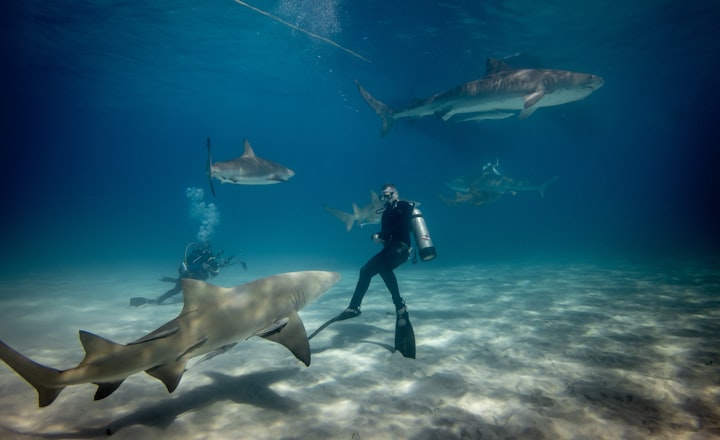
Steven Spielberg's "Jaws" is more than just a film; it's a cultural touchstone, a masterpiece of cinema that continues to captivate audiences decades after its release. At the heart of this cinematic marvel lies a scene often hailed as Spielberg's personal favorite: Quint's haunting monologue about the sinking of the USS Indianapolis. This pivotal moment in the movie serves as a chilling reminder of the real-life tragedy that inspired it.
In July 1945, amidst the closing days of World War II, the USS Indianapolis met its grim fate in the Pacific Ocean. Torpedoed by a Japanese submarine, the ship sank rapidly, leaving hundreds of American sailors stranded in shark-infested waters. Quint's recounting of this harrowing event, with its stark imagery and poignant conclusion—"1100 men went into the water, 316 men came out, and the sharks took the rest"—resonates deeply with audiences, not only for its cinematic power but also for its historical accuracy.
The sinking of the USS Indianapolis stands as one of the deadliest shark attacks in history, a grim testament to the brutality of war and the resilience of the human spirit. As the sailors fought for survival amidst circling predators and unforgiving conditions, their ordeal became the stuff of maritime legend, a testament to the courage and sacrifice of those who served aboard the ill-fated vessel.
But the story of the USS Indianapolis is more than just a tale of tragedy; it is also a testament to the ship's remarkable legacy. Built during peacetime, the Indianapolis served as a symbol of American strength and resolve, ferrying President Franklin D. Roosevelt on diplomatic missions before being thrust into the crucible of war. As the flagship of the Fifth Fleet, it played a pivotal role in some of the Pacific Theater's most significant battles, surviving enemy attacks and kamikaze raids to emerge as a symbol of American naval supremacy.
Yet, it was the Indianapolis's final mission—a top-secret assignment to deliver components for the atomic bomb—that sealed its place in history. Sailing from San Francisco to the Pacific island of Tinian, the ship carried half of the world's enriched uranium, a cargo so precious that even its captain was unaware of its significance. In just ten days, the Indianapolis traversed thousands of miles of open ocean, delivering its deadly payload to the awaiting bombers that would change the course of history.
But fate had other plans for the Indianapolis. On its return journey, the ship fell prey to a Japanese submarine, torpedoed without warning and sent to the depths along with hundreds of its crew. In the days that followed, the survivors faced unimaginable horrors: shark attacks, dehydration, and despair. Yet, amidst the darkness, there were moments of heroism and resilience, as brave men like Lieutenant Adrian Marks risked their lives to save others.
The aftermath of the Indianapolis's sinking was marked by tragedy and controversy. Captain Charles McVey II, unfairly scapegoated for the disaster, endured years of condemnation before finally being exonerated. The ship itself lay undiscovered for decades, a silent testament to the sacrifices of those who perished aboard her.
Today, the story of the USS Indianapolis endures as a reminder of the human cost of war and the power of forgiveness. As the last surviving veterans pass into history, their legacy lives on in the hearts and minds of those who remember. It is a story of bravery and sacrifice, of tragedy and triumph—a story that will continue to inspire generations to come.
As we reflect on the legacy of the USS Indianapolis, it's important to remember the individuals whose lives were forever changed by its sinking. Among the survivors was Harold Bray, one of the few remaining witnesses to the tragedy. In a poignant gesture of reconciliation, Bray reached out to Kido Kusumi, the last surviving crew member of the Japanese submarine that sank the Indianapolis. Their exchange of letters, filled with forgiveness and mutual respect, serves as a testament to the human capacity for healing and understanding.
In the decades since the sinking of the USS Indianapolis, efforts have been made to uncover the truth behind the tragedy and honor the memory of those who perished. In 2017, a civilian team funded by Microsoft co-founder Paul Allen discovered the wreckage of the Indianapolis, resting three and a half miles beneath the surface of the Pacific Ocean. The discovery provided closure for the families of the fallen and shed new light on the events that transpired on that fateful day.
As we continue to commemorate the legacy of the USS Indianapolis, let us not forget the lessons it teaches us about the cost of war and the importance of reconciliation. Through remembrance and understanding, we can ensure that the sacrifices of those who served aboard the Indianapolis will never be forgotten. Their courage and resilience serve as a beacon of hope in an often dark and tumultuous world, reminding us of the power of the human spirit to overcome even the greatest of tragedies.
About the Creator
Med Karim
"When you have a dream, you've got to grab it and never let go."






Comments (1)
Hey there, just wanna let you know that this needs to have the disclaimer added to the beginning or ending, stating that it was created with the help of AI 😊